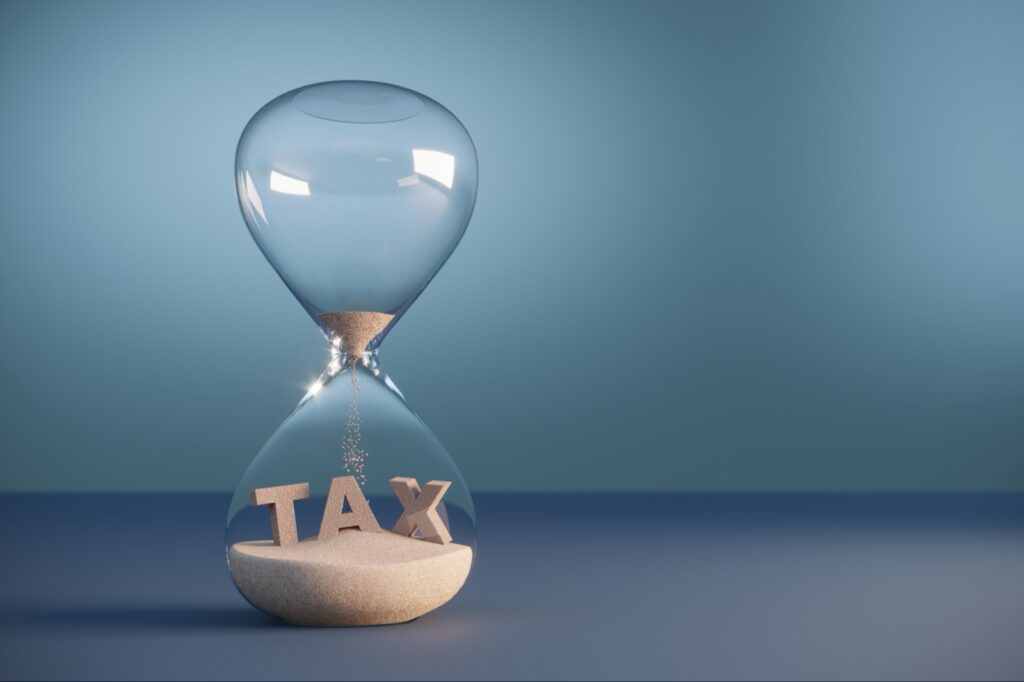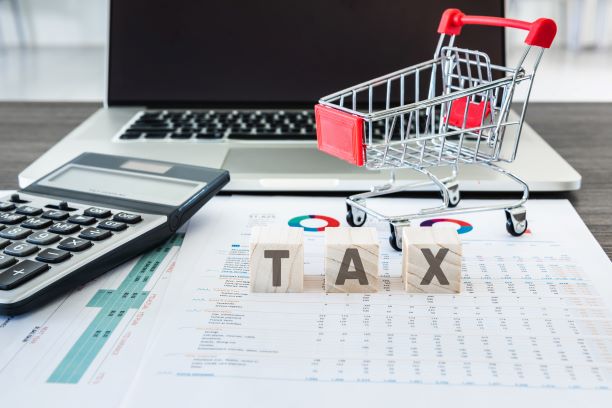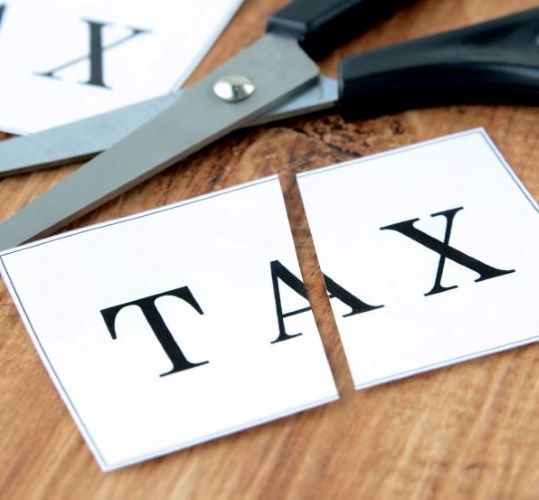On December 15, the final version of the Tax Cuts and Jobs Act, a sweeping tax reform proposal was released. Here we describe key business tax changes that are made under the Act, including a reduction in the corporate tax rate to a flat 21% rate; an increase in expensing to $1 million; a temporary 100% first year qualifying business asset deduction; a 5-year write-off period for R&D expenses; a limitation on the deduction for business interest; and elimination of the domestic production activities deduction.
Corporate Tax Rates
For tax years beginning after December 31, 2017, the corporate tax rate is a flat 21% rate, compared to 15 to 39%.
Dividends-Received Deduction Percentages Reduced
For tax years beginning after December 31, 2017, the 80% dividends received deduction is reduced to 65%, and the 70% dividends received deduction is reduced to 50%.
Alternative Minimum Tax (AMT) Repealed
For tax years beginning after December 31, 2017, the corporate AMT is repealed. For tax years beginning after 2017 and before 2022, the AMT credit is refundable and can offset regular tax liability in an amount equal to 50% (100% for tax years beginning in 2021) of the excess of the minimum tax credit for the tax year over the amount of the credit allowable for the year against regular tax liability. Accordingly, the full amount of the minimum tax credit will be allowed in tax years beginning before 2022.
Expensing & Depreciation
Increased Code 179 Expensing: For property placed in service in tax years beginning after December 31, 2017, the maximum amount a taxpayer may expense under Code Sec. 179 is increased to $1 million, and the phase-out threshold amount is increased to $2.5 million. For tax years beginning after 2018, these amounts (as well as the $25,000 sport utility vehicle limitation) are indexed for inflation. Property is not treated as acquired after the date on which a written binding contract is entered into for such acquisition.
“Qualified real property”: The definition of Code Sec. 179 property is expanded to include certain depreciable tangible personal property used predominantly to furnish lodging or in connection with furnishing lodging. The definition of qualified real property eligible for Code Sec. 179 expensing is also expanded to include the following improvements to nonresidential real property after the date such property was first placed in service: roofs; heating, ventilation, and air-conditioning property; fire protection and alarm systems; and security systems.
Temporary 100% Cost Recovery of Qualifying Business Assets: A 100% first-year deduction for the adjusted basis is allowed for qualified property acquired and placed in service after September 27, 2017, and before January 1, 2023 (after September 27, 2017, and before January 1, 2024, for certain property with longer production periods). Thus, the phase-down of the 50% allowance for property placed in service after December 31, 2017, and for specified plants planted or grafted after that date, is repealed. The additional first-year depreciation deduction is allowed for new and used property. (The pre-Act law phase-down of bonus depreciation applies to property acquired before September 28, 2017, and placed in service after September 27, 2017.)
In later years, the first-year bonus depreciation deduction phases down, as follows:
- 80% for property placed in service after December 31, 2022 and before January 1, 2024.
- 60% for property placed in service after December 31, 2023 and before January 1, 2025.
- 40% for property placed in service after December 31, 2024 and before January 1, 2026.
- 20% for property placed in service after December 31, 2025 and before January 1, 2027.
Luxury Automobile Depreciation Limits Increased: For passenger automobiles placed in service after December 31, 2017, in tax years ending after that date, for which the additional first-year depreciation deduction under Code Sec. 168(k) is not claimed, the maximum amount of allowable depreciation is increased to: $10,000 for the year in which the vehicle is placed in service, $16,000 for the second year, $9,600 for the third year, and $5,760 for the fourth and later years in the recovery period. For passenger automobiles placed in service after 2018, these dollar limits are indexed for inflation. For passenger autos eligible for bonus first-year depreciation, the maximum first-year depreciation allowance remains at $8,000
Qualified Improvement Property: For property placed in service after December 31, 2017, the separate definitions of qualified leasehold improvement, qualified restaurant, and qualified retail improvement property are eliminated, a general 15-year recovery period and straight-line depreciation are provided for qualified improvement property, and a 20-year ADS recovery period is provided for such property.
Thus, qualified improvement property placed in service after December 31, 2017, is generally depreciable over 15 years using the straight-line method and half-year convention, without regard to whether the improvements are property subject to a lease, placed in service more than three years after the date the building was first placed in service, or made to a restaurant building. Restaurant building property placed in service after December 31, 2017, that does not meet the definition of qualified improvement property, is depreciable as nonresidential real property, using the straight-line method and the mid-month convention.
Deductions & Exclusions
Limits on Deduction of Business Interest: For tax years beginning after December 31, 2017, every business, regardless of its form, is generally subject to a disallowance of a deduction for net interest expense in excess of 30% of the business’s adjusted taxable income. The net interest expense disallowance is determined at the tax filer level. However, a special rule applies to pass-through entitles, which requires the determination to be made at the entity level, for example, at the partnership level instead of the partner level.
For tax years beginning after December 31, 2017, and before January 1, 2022, adjusted taxable income is computed without regard to deductions allowable for depreciation, amortization, or depletion and without the former Code Sec. 199 deduction (which is repealed effective December 31, 2017).
An exemption from these rules applies for taxpayers (other than tax shelters) with average annual gross receipts for the three-tax year period ending with the prior taxable year that do not exceed $25 million. The business-interest-limit provision does not apply to certain regulated public utilities and electric cooperatives. Real property trades or businesses can elect out of the provision if they use ADS to depreciate applicable real property used in a trade or business. Farming businesses can also elect out if they use ADS to depreciate any property used in the farming business with a recovery period of 10 years or more. An exception from the limitation on the business interest deduction is also provided for floor plan financing (i.e., financing for the acquisition of motor vehicles, boats or farm machinery for sale or lease and secured by such inventory).
Modification of Net Operating Loss (NOL) Deduction: For NOLs arising in tax years ending after December 31, 2017, the two-year carryback and the special carryback provisions are repealed, but a two-year carryback applies in the case of certain losses incurred in the trade or business of farming.
For losses arising in tax years beginning after December 31, 2017, the NOL deduction is limited to 80% of taxable income (determined without regard to the deduction). Carryovers to other years are adjusted to take account of this limitation, and, except as provided below, NOLs can be carried forward indefinitely.
Tax Credits & Deductions
Domestic Production Activities Deduction (DPAD) Repealed: For tax years beginning after December 31, 2017, the DPAD is repealed for non-corporate taxpayers. For tax years beginning after December 31, 2018, the DPAD is repealed for C corporations.
Like-Kind Exchange Treatment Limited: Generally effective for transfers after December 31, 2017, the rule allowing the deferral of gain on like-kind exchanges is modified to allow for like-kind exchanges only with respect to real property that is not held primarily for sale. However, under a transition rule, the pre-Act like-kind exchange rules apply to exchanges of personal property if the taxpayer has either disposed of the relinquished property or acquired the replacement property on or before December 31, 2017.
Employer’s Deduction for Fringe Benefit Expenses Limited: For amounts incurred or paid after December 31, 2017, deductions for entertainment expenses are disallowed, eliminating the subjective determination of whether such expenses are sufficiently business related; the current 50% limit on the deductibility of business meals is expanded to meals provided through an in-house cafeteria or otherwise on the premises of the employer; and deductions for employee transportation fringe benefits (e.g., parking and mass transit) are denied, but the exclusion from income for such benefits received by an employee is retained. In addition, no deduction is allowed for transportation expenses that are the equivalent of commuting for employees (e.g., between the employee’s home and the workplace), except as provided for the safety of the employee.
For tax years beginning after December 31, 2025, the Act will disallow an employer’s deduction for expenses associated with meals provided for the convenience of the employer on the employer’s business premises, or provided on or near the employer’s business premises through an employer-operated facility that meets certain requirements.
Employee Achievement Awards: For amounts paid or incurred after December 31, 2017, a definition of “tangible personal property” is provided. Tangible personal property does not include cash, cash equivalents, gifts cards, gift coupons, gift certificates (other than where from the employer pre-selected or pre-approved a limited selection), vacations, meals, lodging, tickets for theatre or sporting events, stock, bonds or similar items. and other non-tangible personal property. No inference is intended that this is a change from present law and guidance.
Deduction for Local Lobbying Expenses Eliminated: For amounts paid or incurred on or after the date of enactment, the Code Sec. 162(e) deduction for lobbying expenses with respect to legislation before local government bodies (including Indian tribal governments) is eliminated.
New Credit for Employer-Paid Family and Medical Leave (FMLA): For wages paid in tax years beginning after December 31, 2017, but not beginning after December 31, 2019, the Act allows businesses to claim a general business credit equal to 12.5% of the amount of wages paid to qualifying employees during any period in which such employees are on FMLA if the rate of payment is 50% of the wages normally paid to an employee. The credit is increased by 0.25 percentage points (but not above 25%) for each percentage point by which the rate of payment exceeds 50%. All qualifying full-time employees have to be given at least two weeks of annual paid family and medical leave (all less-than-full-time qualifying employees have to be given a commensurate amount of leave on a pro rata basis).
Accounting Method Changes
Cash Method of Accounting: For tax years beginning after December 31, the cash method may be used by taxpayers (other than tax shelters) that satisfy a $25 million gross receipts test, regardless of whether the purchase, production, or sale of merchandise is an income-producing factor. Under the gross receipts test, taxpayers with annual average gross receipts that do not exceed $25 million (indexed for inflation for tax years beginning after December 31, 2018) for the three prior tax years are allowed to use the cash method.
The exceptions from the required use of the accrual method for qualified personal service corporations and taxpayers other than C corporations are retained. Accordingly, qualified personal service corporations, partnerships without C corporation partners, S corporations, and other pass-through entities are allowed to use the cash method without regard to whether they meet the $25 million gross receipts test, so long as the use of the method clearly reflects income.
Accounting for Inventories: For tax years beginning after December 31, 2017, taxpayers that meet the $25 million gross receipts test are not required to account for inventories under Code Sec. 471, but rather may use an accounting method for inventories that either (1) treats inventories as non-incidental materials and supplies, or (2) conforms to the taxpayer’s financial accounting treatment of inventories. Use of this provisions results is a change in the taxpayer’s accounting method for purposes of Code Sec. 481.
Capitalization and Inclusion of Certain Expenses in Inventory Costs: For tax years beginning after December 31, 2017, any producer or re-seller that meets the $25 million gross receipts test is exempted from the application of Code Sec. 263A. The exemptions from the UNICAP rules that are not based on a taxpayer’s gross receipts are retained. Use of this provision results is a change in the taxpayer’s accounting method for purposes of Code Sec. 481.
Accounting for Long-Term Contracts: For contracts entered into after December 31, 2017, in tax years ending after that date, the exception for small construction contracts from the requirement to use the PCM is expanded to apply to contracts for the construction or improvement of real property if the contract: (1) is expected (at the time such contract is entered into) to be completed within two years of commencement of the contract and (2) is performed by a taxpayer that (for the tax year in which the contract was entered into) meets the $25 million gross receipts test.
The Tax Cuts and Jobs Act has largely taken shape at a breakneck speed over a two-month period, passed by the House on November 16, 2017, and by the Senate on December 2, 2017. Republican leaders are now saying that they have the votes necessary for passage, and it is generally expected that the measure will be approved in both the House and Senate without any Democratic support-then make its way to President Trump for his anticipated signature shortly thereafter. It will be the largest major tax reform in over three decades.
We will continue to unpack the legislation, and issue additional news on details and planning opportunities. If you have questions in the meantime, please contact us as we will be happy to look at your specific situation.




